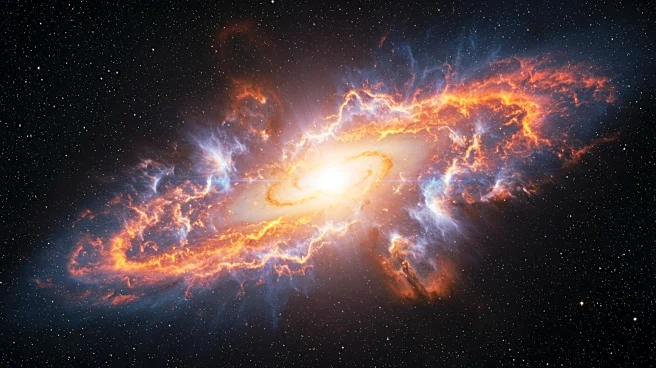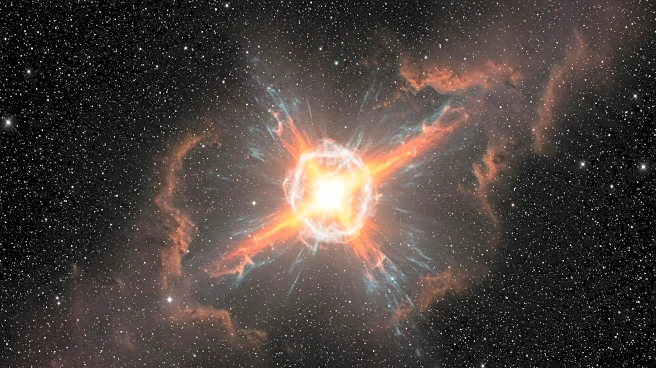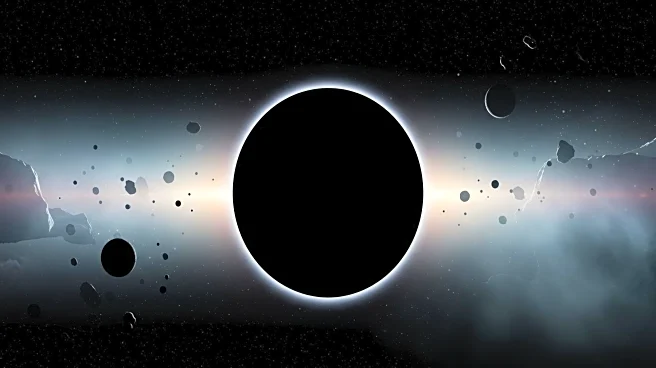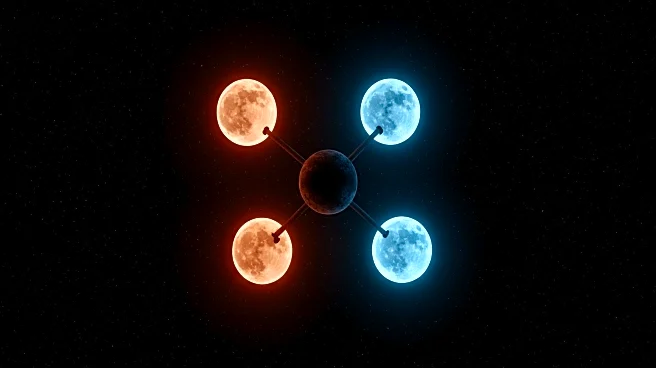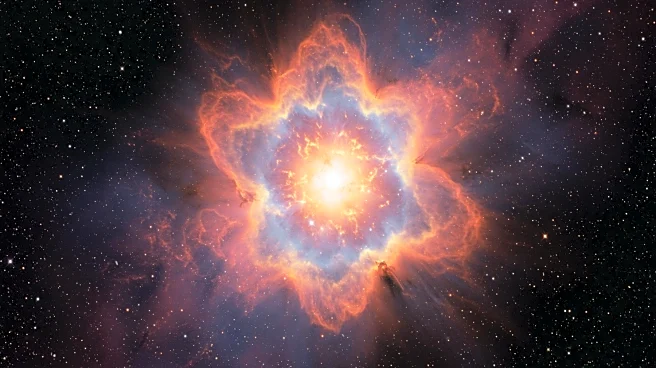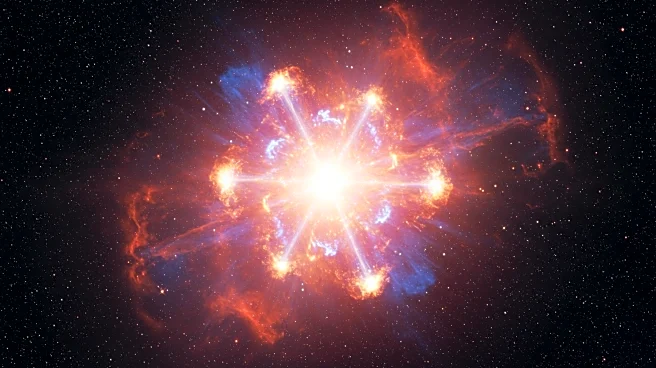Rapid Read • 9 min read
Astronomers have identified a new type of supernova, designated as SN2021yfj, which has provided an unprecedented view into the internal structure of massive stars. This discovery was made using the Zwicky Transient Facility at the Palomar Observatory in Southern California. The supernova, located 2.2 billion light-years from Earth, exhibited a unique characteristic: it had lost its outer layers of hydrogen, helium, and carbon before exploding, revealing a layer of heavier elements like silicon, sulfur, and argon. This phenomenon challenges existing theories about stellar evolution, as it suggests that stars can lose significant amounts of material before their explosive end. The study, published in the journal Nature, highlights the complexity of stellar life cycles and suggests that current models may not fully capture the diversity of stellar behaviors.
AD
The discovery of this new type of supernova has significant implications for our understanding of stellar evolution and the life cycles of massive stars. It challenges the conventional models that describe how stars evolve and explode, suggesting that there are more complex pathways than previously thought. This finding could lead to a reevaluation of how astronomers classify and understand supernovas, potentially impacting the study of cosmic phenomena and the lifecycle of stars. The ability to observe the internal layers of a star before it explodes provides direct evidence of the long-theorized internal structure of massive stars, offering new insights into the processes that govern their evolution and demise.
The research team is considering several possibilities for what caused the star to lose its outer layers, including interactions with a companion star or exceptionally strong stellar winds. They have classified this event as a type Ien supernova, a new category based on the presence of silicon, sulfur, and argon. Future observations and studies will aim to identify more examples of this supernova type to better understand its frequency and characteristics. The Vera C. Rubin Observatory, with its capability to spot numerous supernovas, may play a crucial role in identifying similar events, although it does not measure spectrums. This discovery opens new avenues for research into the diversity of stellar explosions and the mechanisms behind them.
This discovery not only challenges existing theories but also highlights the limitations of current astronomical models and the need for more comprehensive surveys and observations. The use of machine learning and advanced telescopic technology could be pivotal in identifying and understanding these rare cosmic events. The findings underscore the importance of interdisciplinary research and collaboration in advancing our knowledge of the universe.
AD
More Stories You Might Enjoy
